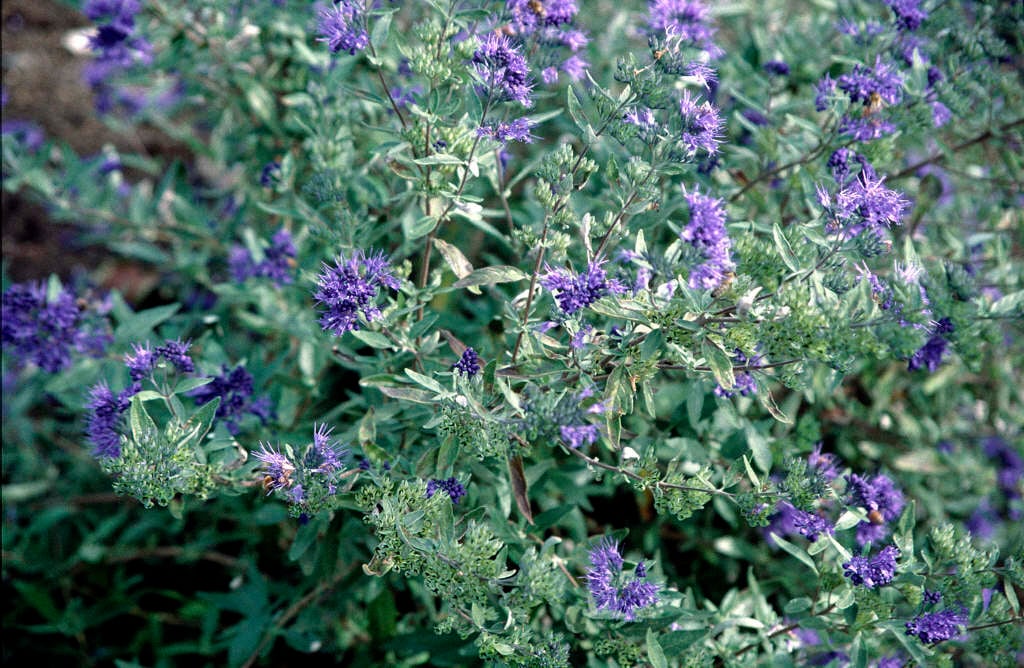Size
Ultimate height
0.5–1 metresTime to ultimate height
5–10 yearsUltimate spread
1–1.5 metresGrowing conditions
Moisture
Well–drainedpH
Acid, Alkaline, NeutralColour & scent
| Stem | Flower | Foliage | Fruit | |
| Spring | Green Grey Silver | |||
|---|---|---|---|---|
| Summer | Blue | Green Grey Silver | ||
| Autumn | Blue | Green Grey Silver | ||
| Winter |
Position
- Full sun
Aspect
West–facing or South–facing or East–facing
Exposure
ShelteredDrought resistance
Yes Hardiness
H4Botanical details
- Family
- Lamiaceae
- Native to GB / Ireland
- No
- Foliage
- Deciduous
- Habit
- Bushy
- Genus
Caryopteris can be deciduous shrubs or perennials, with aromatic, simple leaves and small blue or white flowers in compact axillary clusters in late summer and autumn
- Name status
Accepted
How to grow
Cultivation
Grow in moderately fertile, light, well-drained soil in full sun. In areas where summers are cool or winter temperatures fall below -15°C it is ideal for planting near a warm sunny wall
Propagation
Propagate by softwood cuttings which can be taken between spring and midsummer; semi-ripe cuttings from mid to late summer and hardwood cuttings from late autumn to midwinter
Suggested planting locations and garden types
- City and courtyard gardens
- Coastal
- Cottage and informal garden
- Wildlife gardens
- Flower borders and beds
Pruning
Pests
May be susceptible to capsid bug which causes leaf distortion
Diseases
May be susceptible to honey fungus
Get involved
The Royal Horticultural Society is the UK’s leading gardening charity. We aim to enrich everyone’s life through plants, and make the UK a greener and more beautiful place.
